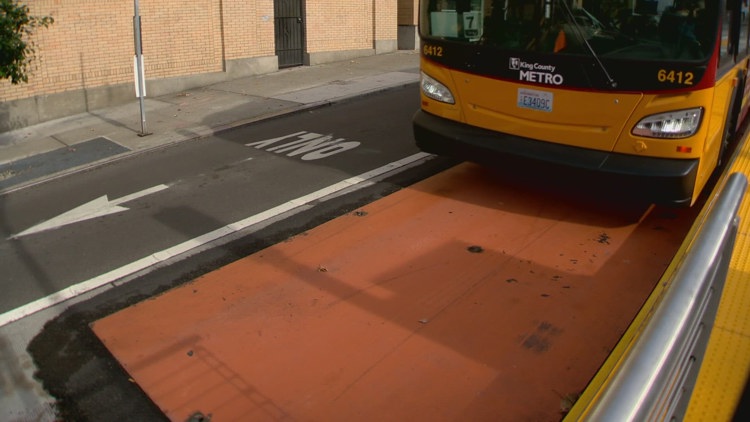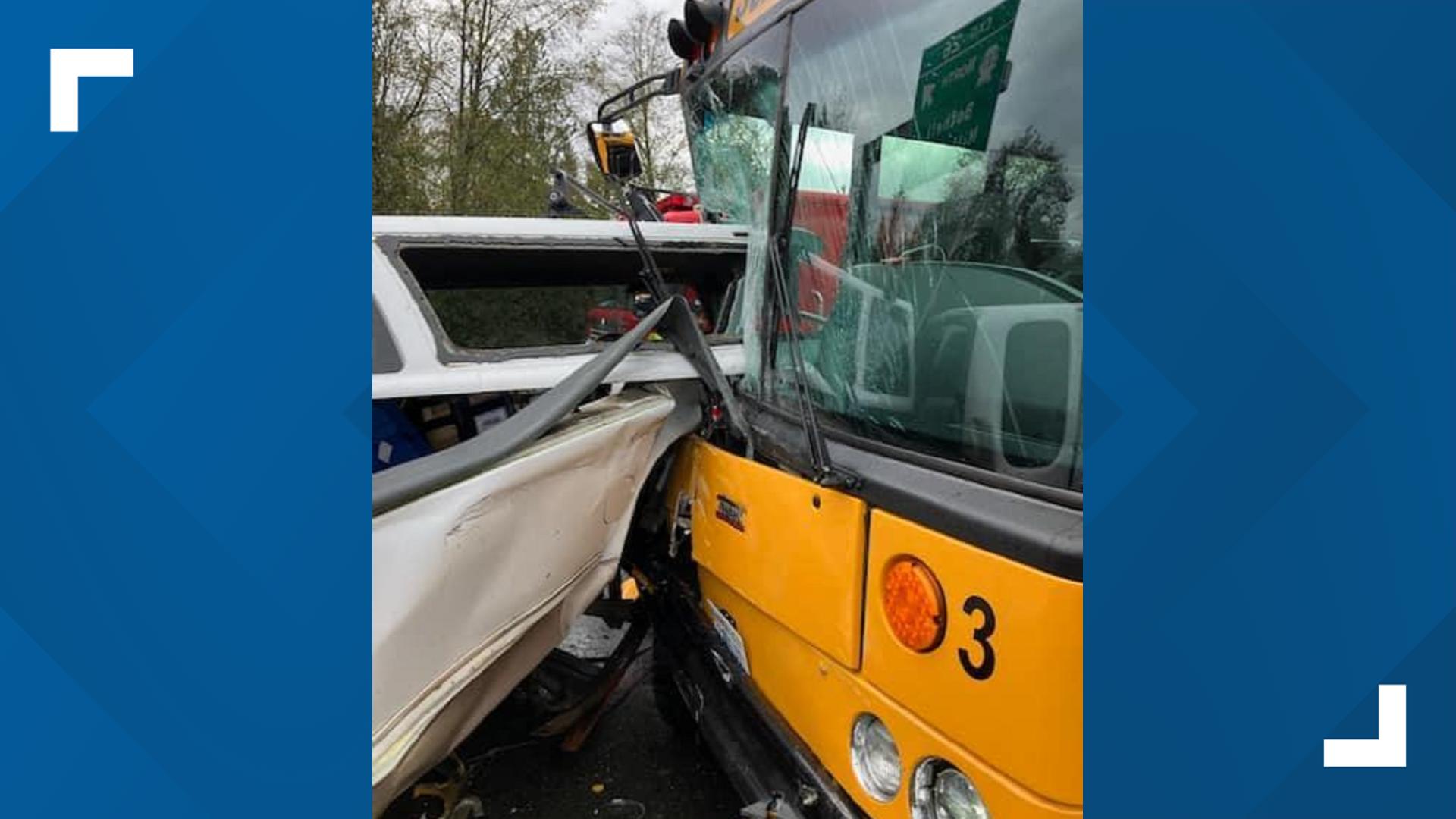SEATTLE — The Seattle Department of Transportation says there is a temporary fix in place at three new bus stops to make sure they are ADA compliant.
All three stops are along the new RapidRide G Line service connecting downtown Seattle with the Central District and Madison Valley. Service began Saturday, Sept. 14.
Impacted stops:
• Eastbound Madison Street between Terry and Boren avenues
• Eastbound Madison Street between Summit and Boylston avenues
• Westbound Madison Street at East Union Street and 12th Avenue East
Road crews installed steel platforms that lifted the arriving buses so the wheelchair ramp would match the level of the platform before service began on the newest RapidRide line.
For those with disabilities, especially those unable to drive, a bus ride can mean freedom.
“Public transit can be a real, again, door opener. It can be frustrating when it’s not as accessible as you would like it to be,” said Leanna Namovic, the program manager for the Disability Empowerment Center, a nonprofit organization that works with people of all backgrounds in King County.
“Our purpose is to help people with disabilities be able to live their fullest lives in their communities,” she continued.
SDOT spokesperson Ethan Bergerson insisted no passengers have been impacted and said that crews, not riders, noticed the issue.
Bergerson added, "These issues were identified during our standard inspections and operational testing before bus service began."
“What we discovered when we were doing the operational testing is that there were some places where the platform was a fraction of an inch off from what the plans were and so we implemented an effective, short-term solution to make sure that they worked smoothly on day one,” said Bergerson said.
Namovic hopes this sheds light on how important public transportation is for people who rely on it.
"It’s fabulous that Seattle was able to fix this problem so quickly, but it does show that there needs to be more conversations between Metro and the transit," said Namovic.
SDOT says it’s currently working on a long-term fix. Options could include hydraulic lifts on buses or pouring additional concrete to raise the street.
About $80.5 million in funding for the project came from the Federal Transit Administration. The rest of the money came from the Move Seattle Levy, Sound Transit ST3, King County and state funds. SDOT says the cost of a permanent fix is negligible compared to the total cost of the G-Line project.



